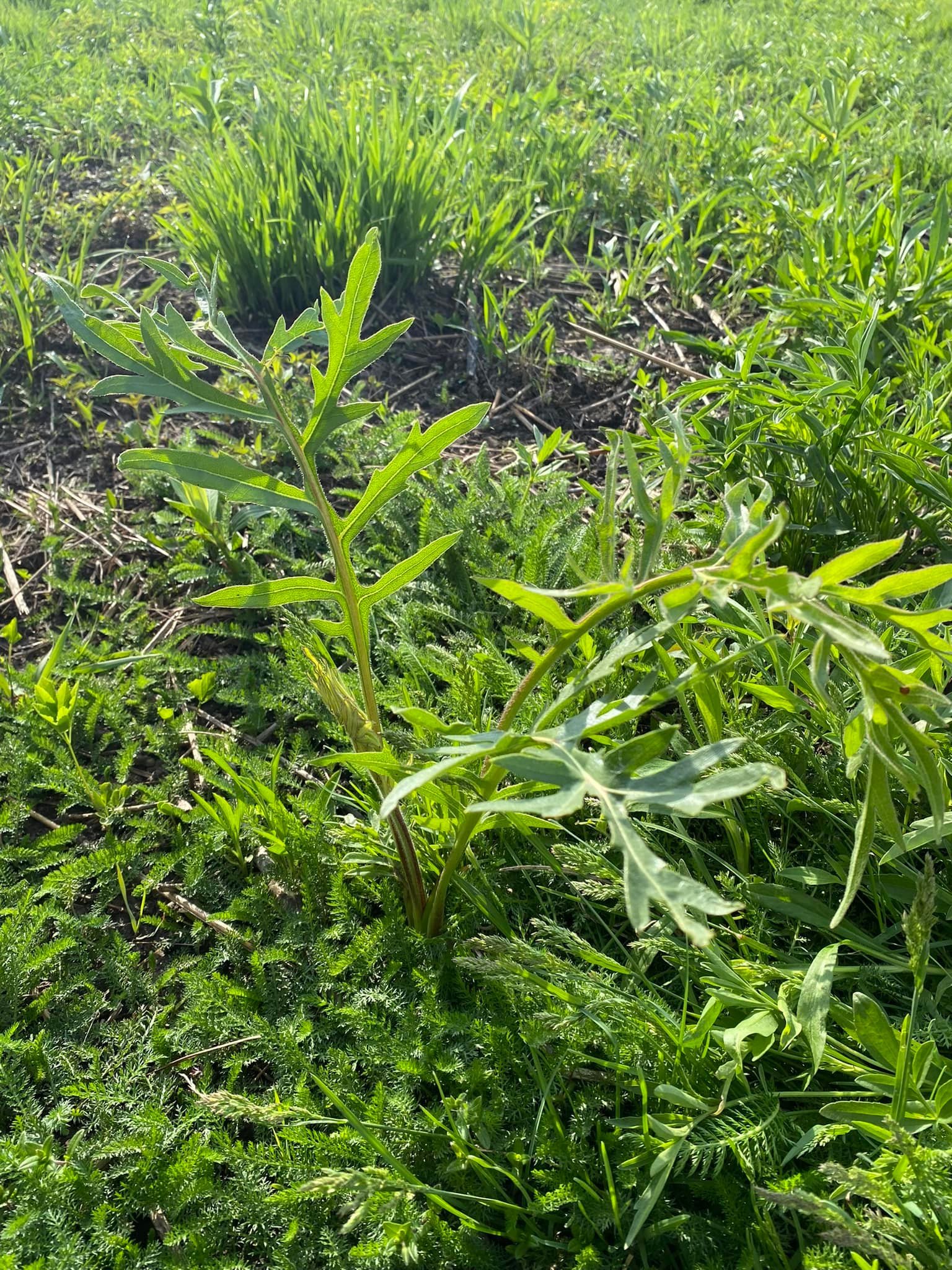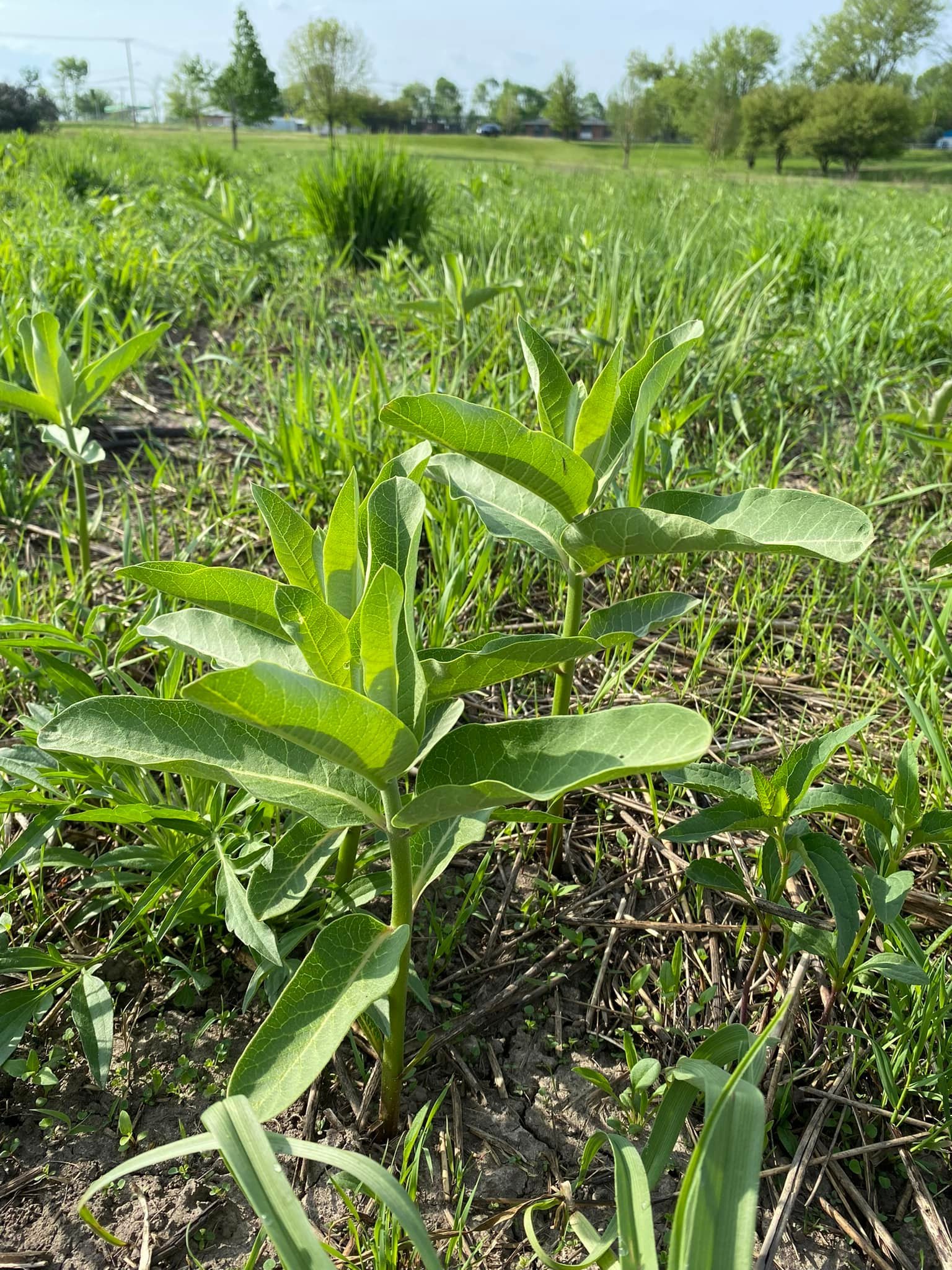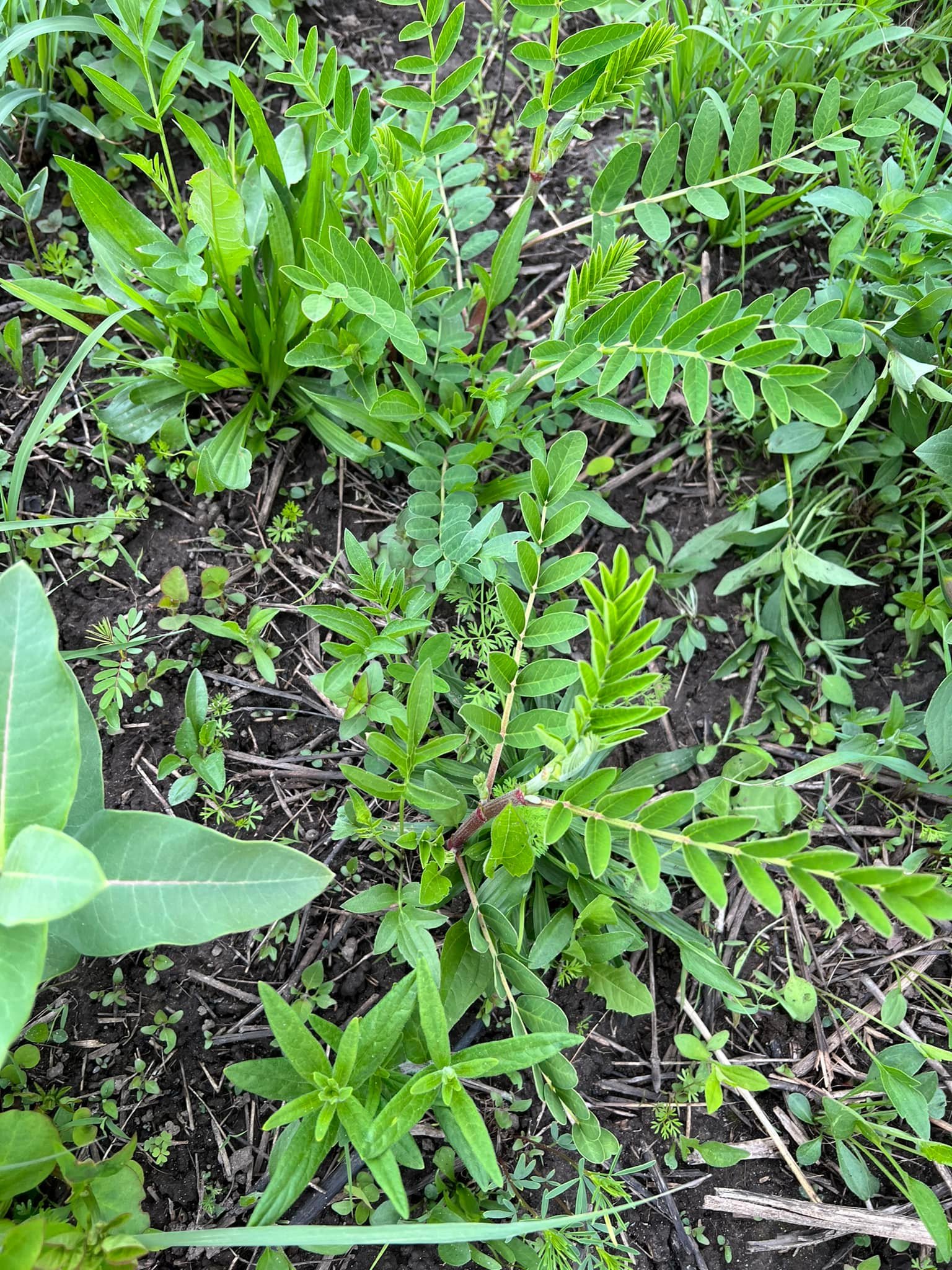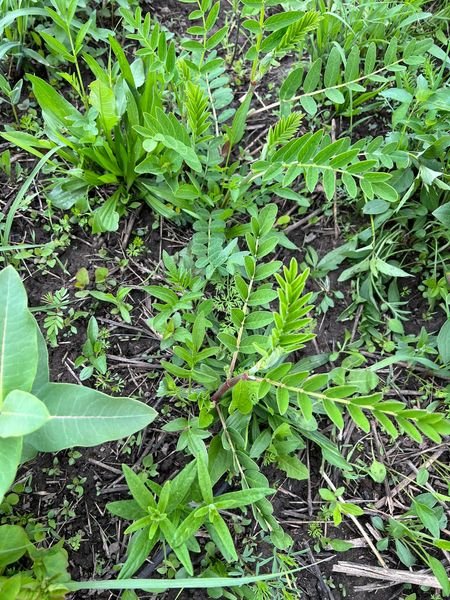Fun Facts
Friends of Noelridge Background
In 2008, the Friends of Noelridge, a non-profit planned and built the Hosta Garden shade structure with the help of an Eagle Scout project. They also built and provide the books for a mini library that can be found at the entrance of the gardens. Currently, the Friends of Noelridge are fundraising to complete a mural on the outside of the Greenhouse entitled “Natives: Beautiful & Beneficial.”
The Friends of Noelridge organization was instrumental in planning, designing, planting, weeding and maintaining the beds that won the All-American Selection Landscape Design Contests in 2023, as well as in 2014, 2015 and 2016. They also take care of the Monarch Research Station Butterfly Tent at the park that releases hundreds of butterflies every year.
The volunteers that come to the greenhouse can experience a warm, fun learning experience in many different areas. Their main “job” is to work with others in the community to provide assistance in propagating and nurturing thousands of plants that will beautify Cedar Rapids every year.
Through staff changes, the pandemic, the derecho and ADA improvements, Friends of Noelridge have stepped up whenever needed. The City of Cedar Rapids, Parks and Recreation Department and greenhouse staff cannot thank them enough!
New VP Installed at FON
sdhfewife
Banana plants - Did you know?
There are several banana plants in the ‘Tropical Rain Forest’ section of the Noelridge Conservatory. The banana plant is not actually a tree. It is an herbaceous plant. This means that it does not have a persistent wooden stem/trunk above the ground. Once a banana plant has produced fruit, the main stem dies, but a new plant will grow from a rhizome, or underground stem, shooting off the main plant. It takes about 2 years of growth for the plant to bloom. Then, up to another year for the bananas to form and ripen.
From a botanical standpoint, a banana is actually considered a berry. That is because it is a fleshly fruit lacking a stone. Banana plants have large, paddle-shaped leaves. The leaves are smooth and waxy, and can come in a variety of colors. Large leaves help the plant absorb as much sunlight as possible. They also collect and channel rainwater to the base of the plant, creating a more humid microenvironment for smaller plants to thrive in.
There are over 1,000 different types of bananas. Bananas are native to tropical regions and are cultivated in countries with warm climates. Banana plants thrive in tropical regions where the average temperature is 80° F (27° C) and the yearly rainfall is between 78 and 98 inches.
Bananas are the number one fruit crop in the world. Over 100 billion pounds of bananas are eaten each year worldwide. They are the 4th largest overall crop, after wheat, rice, and corn. India grows more bananas than any other country. The Philippines, China, and Ecuador are the next three top producers of bananas. Americans eat more bananas than apples and oranges combined.
A current threat to bananas is called Panama Disease, which is a fungal disease that infects the roots of banana plants, preventing them from absorbing nutrients and water. This causes the plant to starve and eventually die. The disease can spread through infected plants, contaminated water, contaminated soil, and humans. Scientists are working on ways to increase the genetic diversity of bananas to help slow the spread of the disease and increase the plant's defense against it.
Bananas are good for you: one banana contains about 74% water, 23% carbohydrate, 1% protein, and 0.5% fat. A 4-ounce banana without the peel is a good source of vitamin B6, potassium, and fiber.
Noelridge Greenhouses start using Chemical-Free Pest Management
May, 2024: Did you know that in the last two years Noelridge Greenhouse has switched to a more organic Integrated Pest Management system? The Greenhouse has chosen to use beneficial insects to combat the bad pests instead of harsh chemicals, some of which have been directly linked to neurodegenerative disorders. The Cedar Rapids Parks Department staff at Noelridge Greenhouse have spent a ton of time and resources to research and find the best organic solutions to dealing with these pests.
Several species of beneficial insects have been added inside the greenhouse, including Green Lacewings (Chrysoperla carnea), Ladybugs (Coccinella septempunctata) Mealybug Destroyer (Cryptolameous montrouzieri) and White Fly Parasitoid Wasp (Encarsia formosa) to name a few. Although there were a few setback to start, the learning curve kicked in and there has been significant success with controlling various pest species such as whiteflies and aphids. More importantly, a safer environment has been created for those on educational tours, which often include to some of our most vulnerable populations including the elderly and children. In addition to safer conditions for the people, the plants that then go out into the city are free of pesticide residues and therefore truly “benefit” the other pollinator species that also call Cedar Rapids home instead of poisoning the plants that they rely on to survive.
Make sure to come check out all of the beautiful plants at Noelridge Greenhouse and Gardens and remember Noelridge Greenhouse is open to the public Monday to Friday from 7:00 am to 3:30 pm except for Thursdays where open hours are from 7:00 am to Noon.
The Noelridge Greenhouse is open year round whether you are looking for a tropical escape during the winter, wanting to learn more about plants or meditating in the gardens during the summer. We offer a beautiful place to come and explore and dream of new landscapes in your own yards. The best part is that it is free and available to all!
Noelridge Greenhouses - 50 years old In 2022!
While the Parks Division has been producing flowers for public spaces in Cedar Rapids since 1930, the greenhouses at Noelridge Park just turned 50 at the end of 2021.
The first greenhouses were built at Bever Park. They were three, 20 x 80 foot glass houses that were attached to the east side of the maintenance building that still exists. The five greenhouses at Noelridge Park opened on December 27, 1971 are still in operation today. It took months of moving and planting plants to prepare for the first open house on May 13 and 14, 1972. Fifty years later, some of the original plants from the greenhouses at Bever Park remain in our permanent display of tropical plants.
Between 60,000 and 65,000 flowers and plants are grown annually that are planted at city parks, golf courses, the airport, in planters downtown and in many other public places. The greenhouse has hundreds of types of plants with something new and interesting growing year-round.
There is a small, but extremely dedicated, crew of employees that plant flower beds, seed, plant, take cuttings, and host open houses and events. With the help of a few seasonal employees and very committed volunteers, we are able to create beautiful parks and public spaces for residents and visitors to enjoy.
Article from the CR Parks and Recreation Website:
When thinking about our roots, it’s important to remember that Iowa used to be covered by more than 85% of Tallgrass Prairie! This was an always changing environment filled with more plant diversity than a tropical rainforest! Today, only 0.1% of remnant prairies still exist. The devastation this has caused to not only plant species but insect and bird species as well has been immeasurable. However, many organizations today are working hard to restore these dwindling populations in the form of reconstructed pollinator prairies. In 2017, the City of Cedar Rapids Parks and Recreation Department, with the help from the Monarch Research Project, put forth a plan to convert a portion of the city’s green space back to Tallgrass Prairie ecosystems. Planting these important ecosystems was just the beginning. Each year these habitats need to be maintained through various Natural Resource Management techniques including the use of Prescribed Burns. This year at Noelridge Park the 8 acre prairie which was planted in 2017 was burned. In the video added to this post we show how the burn essentially cleansed the ground from most plant debris. After a week of rain the plants began to emerge from the blackened soil and in the pictures attached to this post you can see some of the important species that now call Noelridge Park home. These include Baptisia australis (Wild Blue Indigo), Asclepias syriaca (Common Milkweed), Astragalus canadensis (Canadian Milkvetch), and Silphium laciniatum (Compass Plant). The City of Cedar Rapids Parks and Recreation department will continue to maintain and add new species to these reconstructions to make the City of Cedar Rapids a more diverse and resilient city.
Germination Strategy at Noelridge Greenhouse
Starting as early as January, we are busy sowing seeds. There are over 500 varieties of ornamental annuals that are grown at the Noelridge Greenhouse and Gardens. Depending on the species, the germination strategy can vary greatly.
First, we select the proper growing container; this can be various sizes of pots or a germination flat, depending on the number of seeds. Next, we prepare the growing media, for this we use a sterile soilless seed starting mixture made out of peat moss, vermiculite and perlite. To prepare we add enough water to the mixture so that the mixture is evenly moist but not soaking wet. A good rule of thumb is when you grab a handful of mixture and squeeze it, no water will come out but instead the mixture will stay in a solid formation.
After preparing the growing media we fill up the container, we can use a weight to slightly compress the mixture but not too much. We will then add the seeds to the container, being careful to place the seeds evenly apart across the surface of the container. Depending on the species, some seeds that are really tiny need light in order to germinate, however other species require darkness to germinate. For the seeds that require darkness, we use a flour sifter to lightly cover the seeds with vermiculite.
Once the seeds are in the containers we lightly water them with a seedling nozzle attached to a hose. We then use a glass lid to cover the pot to keep in humidity, and place the containers underneath a grow light. Germination times can vary dramatically, some seeds like the species Salvia guarantica (Black and Blue Salvia) can germinate in a matter of days while other seeds like the species Carex buchananii (Red Rooster Sedge) can take weeks to germinate. Even individual seeds of the same species can be immensely different, for example the species Optunia humifusa (Eastern Prickly Pear Cactus) can take anywhere from five days to up to six months to germinate!
The seedlings will stay under the grow light until they emerge with their cotyledon leaves and hit the glass ceiling. All flowering plant species are either Dicots (Dicotyledons) or Monocots (Monocotyledon). Dicots (Forbs) have two cotyledon (embryonic) leaves when they first germinate, while Monocots (Grasses, Sedges, etc.) only have one cotyledon leaf. The cotyledon leaves have all evolved to look the same. These are the first leaves that form when the seedling germinates.
After the seedling continues to mature the next leaf is called a true leaf. The true leaf is unique to each species and will be a miniature version of its adult leaves. Once two true leaves are well pronounced, with the help from our volunteers (The Friends of Noelridge) we transplant the seedlings into plant plug grow trays. These seedlings will grow at Noelridge Greenhouse for several months before they are planted around the city including the airport, golf courses, various parks, downtown and of course the gardens at Noelridge.
Currently at the Noelridge Greenhouse we are also growing over 100 species of Native Tallgrass Prairie Plants, many of which require some form of seed stratification. This can include scarification, which is the action of weakening the seed coating through the use of boiling water or from scratching the seed with sand paper. Another form of stratification is using temperature change to force the seed to activate by mimicking the natural change in seasons. Some species only require one of these tactics for example Desmanthus illinoensis (Illinois Bundle Flower) of the Fabaceae (Legume) family requires stratification but does not require any cold treatment. On the other hand Penstemon calycosus (Calico Beardtongue) of the Scrophulariaceae (Figwort) family requires 30 days of cold treatment (32 - 38° F) to start the germination process but no scarification is necessary. Some species require both scarification and stratification for example Callirhoe involucrata (Purple Poppy Mallow) of the Malvaceae (Mallows) family requires scarification through the use of boiling water to mimic intense heat caused by wildfires, it then also requires a cold period to mimic the season of winter. Both of these steps are crucial for the seed to begin its germination process.
Stratification process can be even more complex still, for example Arisaema triphyllum (Jack in the Pulpit) of the Araceae (Aroid) family which is a monocotyledon requires a cold period of 60 days followed by a warm period of 60 days followed by another cold period of 60 days to mimic two winters. Come in and take a look, we are open Monday through Friday from 7:00 am to 3:30 pm except for Thursdays which we are open from 7:00 am to Noon.



